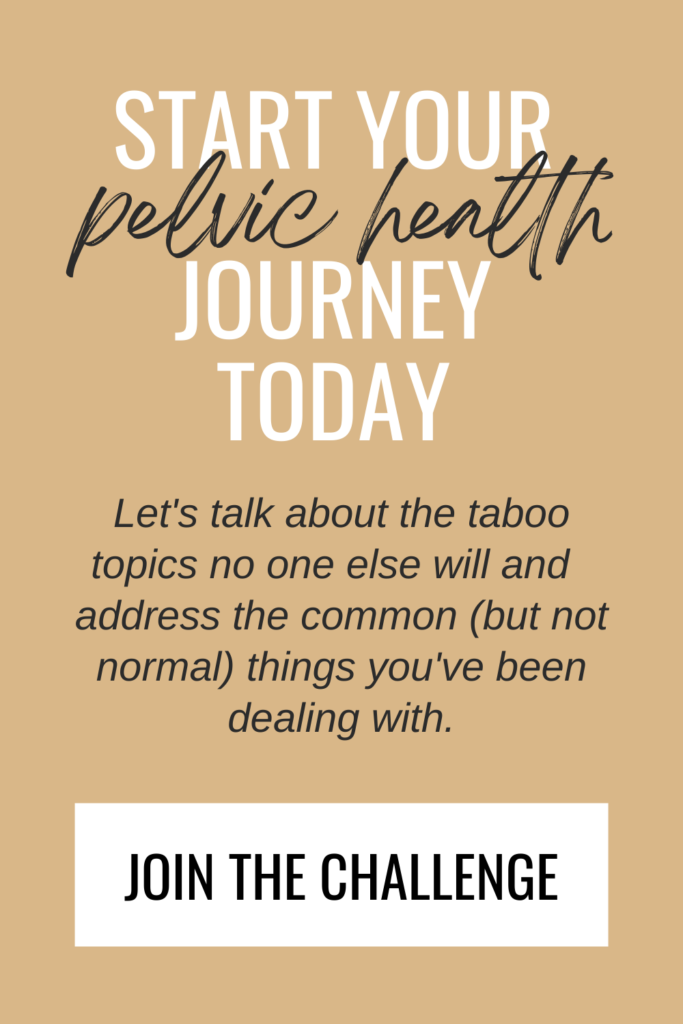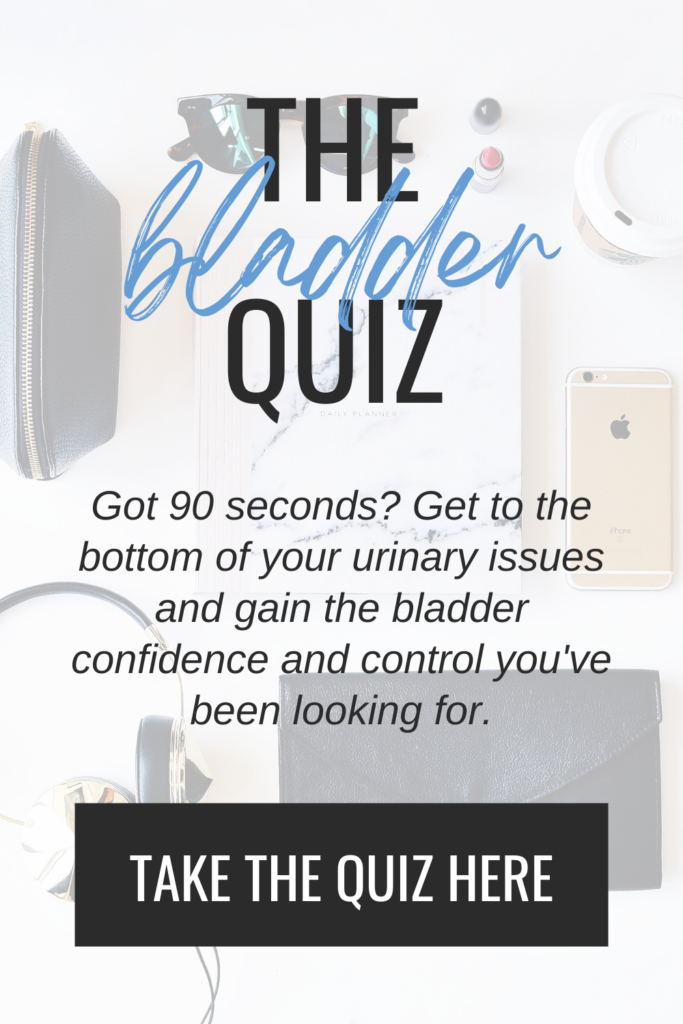Breast health…it’s not quiiiiiiite as extravagant or exciting as the pelvic floor (IMO), but that might be what I love most about it. Whether you’re pregnant and planning to breastfeed, postpartum and worried about mastitis, or if breast cancer runs in your family (or even if none of the above describe you but you simply want to be as healthy as possible from head to toe *raises hand*), there are holistic and realistic ways to care for your breasts and ultimately promote full-body wellness.
RELATED POST: My Best Holistic (& Realistic) Breastfeeding Tips After Nursing for Two Years
Is the topic of breast health my forte? Ummmmm…nope. Did writing this require me to step outside my comfort zone, do a ton of research, and push past good ol’ imposter syndrome? You better believe it. But in the name of my health…your health…women’s health and the ever-growing need for more resources, I’m sharing everything I know for happier & healthier (& perkier) breasts right here, right now. While each of these points could be a blog post of their own, consider this the beginning of the conversation and ~definitely~ don’t hesitate to dig deeper where you feel necessary.
Why breast health matters
I was shocked to learn that, in 2020, breast cancer became the most common cancer worldwide. Since 2008, breast cancer incidence has increased by 20% and mortality has increased by 14%. While survival rates are also increasing (well there’s a little good news!), these statistics are worth noting and should prompt us out of proactivity – not fear – to give our breasts a bit more attention.
Beyond the growing cancer prevalence, breast health directly relates to the lymphatic system – a network of nodes that moves lymph through the body to regulate fluid balance, filter out toxins, and support immunity. The neck and armpits are both primary sites for lymph nodes and drain directly into breast tissue and visa versa. In other words, it’s not just about feeding babies and sex appeal, friend…these bad boys do and go through a lot, which is why giving breast health the attention & effort it deserves is actually quite important.
All things holistic breast health
If you’re officially convinced that breast health is worth your time and energy, then ooooooh do I have a list of easy & effective ideas to seamlessly include your breasts in that regular self-care routine of yours. I’m happy to report that all it takes are some little tweaks to what you’re already doing, a few (fun) additions, and a bit more mindfulness around lifestyle decisions for healthy breast tissue and ultimately full body health.
SWITCH TO A WIRELESS BRA
I will personally take any excuse to go shopping, and if you’re right there with me, then use the benefits of a wireless bra as a reason to refresh that top drawer! Underwire places pressure and restriction on breast tissue, and this can cause skin irritation, poor blood circulation, limited lymphatic flow, muscle pain & headaches, blocked milk ducts & mastitis, and even chest pain & digestive issues…especially if the bra doesn’t fit perfectly.
I’ve found from personal experience that wireless bras provide the same lift, separation, and support of an underwire bra, but with way more comfort, better adaptability for chest shape and size (much appreciated by this postpartum mama whose body is still changing), but without all the side effects of underwire. If you don’t know where to start or have analysis paralysis in making this switch, I’ve got you, girl! I tried the best wireless bras on the world wide web, and you can find my favorites in the blog post below *wink wink*.
RELATED POST: I Tried Allll the Internet’s Best Wireless Bras & [These] Were My Favorite
ORRRRR JUST GO BRALESS
Before you “lol” at this one or scroll on past…hear me out. Increased bra use leads to a loss of natural elasticity as the breast tissue learns to rely on bras for support. Despite what your mom might have told you, the more time you spend sans bra, the healthier and perkier your breasts will be. If you just can’t bring yourself to go full-on braless (I’m right there with ya) this can look like removing your bra when sleeping, keeping it off as long as possible in the mornings, and taking it off as soon as you’re home for the day.
TOXIN-FREE UNDERARM CARE
Because the underarms are a primary lymphatic system site – full of pours and glands to cool our bodies and release toxins through sweat – how we care for this area plays a huge role in breast health. From deodorant choices to shaving tools and the timing of when we do both, plus how we launder the clothes that sit on our armpits all day, we can decrease and even eliminate the amount of cancer-causing and hormone-disrupting chemicals that enter our body through the armpits. I found this topic important enough to write a whole blog post on it, and you can find that beauty (plus all my favorite toxin-free underarm hygiene products) by clicking the link below.
RELATED POST: Simple Swaps to Optimize Your All-Natural Underarm Care
REGULAR EXAMS & SCREENINGS
Early detection directly correlates with better breast cancer survival rates, and there are multiple ways to proactively set yourself up for success. Beyond cancer risks, I’m also a big proponent of women knowing their bodies and following their intuition, and the following are actionable & accessible ways to do just that –
Monthly self-breast exam. Regular self-breast exams are the perfect way to learn your body’s normal and effectively identify if something’s suddenly different. It’s recommended that women do a self-breast exam every month, preferably the week after their period. I love the Keep a Breast App, which not only reminds me when to do my exam, but walks me through it step-by-step, and has super helpful guidance if something doesn’t look or feel “right”. There are zero reasons not to put a two-minute monthly self-breast exam on your calendar, so let’s both get better at this one together, m’kay?
RELATED POST: 13 Smartphone Apps Every [Health-Conscious] Woman Needs On Her Home Screen
Yearly clinical breast exam. I believe you know your body better than anyone else ever will (yes…even your doctor!), but there’s something to be said about the quality of a trained professional when it comes to detecting something as diverse and deadly as cancer. I highly recommend checking in with your primary care provider once a year and requesting a manual breast exam if they don’t do one automatically.
Thermography. Mammograms are the mainstream recommendation for women over forty and use both compression and radiation to detect already-formed masses in the breasts. I personally take pause at the idea of regular radiation exposure and believe thermography is an alternate option worth considering. Thermography uses a camera to identify abnormal heat and vascularity patterns, which is indicative of cancerous cell growth. While mammograms only find masses the size of a pea or larger (which may take up to eight years to form based on how fast cancer cells reproduce), thermography can catch concerns much sooner and in a far safer manner. Click here to find a thermography clinic near you.
CONSIDER DITCHING HORMONAL CONTRACEPTIVES
To put it bluntly, research shows that any and every type of hormonal contraceptive increases a woman’s risk of breast cancer, and a recent study from the University of Oxford found that progesterone-only birth control is associated with a 20-30% higher probability. Beyond this frightening fact, many hormonal contraceptives have side effects of weight gain and fluid retention, both of which can drastically & quickly change breast size and structure and contribute to breast pain & tenderness.
If you’re on birth control for something other than family planning (like endometriosis, PCOS & fibroids, heavy or painful periods, or acne), it may be worth getting to the root cause of the problem by looking further into your gut and hormone health with a functional nutritionist. If you’re using birth control to prevent pregnancy, you may want to consider non-hormonal options like condoms, the fertility awareness method (what I use), a copper IUD (which comes with its own set of risks, btw), and barrier methods like diaphragms and sponges.
RELATED POST: 5 Things I Did After Taking My Last Birth Control Pill
PROMOTE LYMPHATIC MOBILITY
We’ve already established that the lymphatic system directly affects overall breast health, and the good news is there are muuuuuultiple ways to improve lymph mobility and therefore promote healthy breast tissue. This section could (and most definitely will) be a blog post of it’s own, but for now, consider this your introduction to all things breast lymphatics. Browse through the list below and start with the one that feels most intuitive & practical to you, then expand your breast health regimen as you become more confident and comfortable with each one you try.
Dry brushing. Dry brushing can be done on the entire body, but doing so for breast health primarily takes place at the chest and underarm. Just before a bath or shower, use a dry brush to brush with short, light strokes from the wrists towards the armpits, from the bra line on your sides up to the armpits, from the chest above and below the breasts out to the armpits, and from the neck and collarbone down to the armpits, repeating each a handful of times before moving to the next.
Gua sha. If you’re already sold on gua sha facials, keep moving south for some major breast health benefits. Start by rubbing a toxin-free body oil on the breasts, then with light pressure, use the edge of the gua sha stone to “pull” outward in every direction from the nipple. Keeping the pressure gentle, next work above and below the breast from the sternum to the armpit, then finally lift the arm to work up from the bra line into the armpit.
Breast massage. I don’t know a single soul who would turn down a good massage, and my guess is our breasts feel the same. Take a dime-sized amount of this breast lymph flow balm (or any toxin-free oil or cream of your choice) and rub it into the breasts, then follow this video for a massage technique that mimics natural breast lymphatic flow.
Deep breathing. Stress reduction, pelvic floor health, better sleep, and improved immunity are a small sample of the many benefits of deep breathing. Because the chest moves in and out, up and down with each and every deep breath, this stimulates the lymphatic system and promotes breast health. Even just a few deep breaths throughout your day – upon waking, while driving, during meals, in the shower, or before going to bed – can make a huge difference.
Stay hydrated. The lymphatic system runs on water, and if you’re not well hydrated, it will become sluggish and lymph accumulation can occur in the neck, armpit, and breasts. I recommend women drink half of their body weight (in pounds) in ounces of water per day, more if pregnant, breastfeeding, or very active, and regularly supplement with electrolytes to optimize fluid absorption.
Sweat. Multiple studies conclude that toxins, pollutants, and excess hormones leave the body through sweat, thereby “cleaning out” the lymphatic system and giving it a chance to “reset”. Exercise and sauna use are two healthy and effective ways to get your sweat on and should be taken advantage of frequently for so many reasons…including breast health.
EXERCISE
Beyond the lymphatic benefits of sweating listed above, general movement is good for breast tissue. Not only does exercise reduce the prevalence of obesity – a known risk factor for breast cancer – but the breasts actually moving (specifically up and down) is beneficial for breast tissue and the lymphatic system. Jogging, jumping rope, and rebounding are all great ways to incorporate breast health into your weekly movement plan.
Similarly, lifting weights – specifically to strengthen the chest, back, and shoulders – improves posture, which significantly increases lymphatic mobility. It can also lift the breasts and make them perkier by firming the muscles around them. Stronger upper body muscles can also decrease neck, back, and shoulder pain associated with large breasts as the muscles will be more likely to tolerate the breast’s weight.
SUPPLEMENTATION
While I would love to say that I eat a well-balanced diet 24/7 and am able to get all my vitamins, minerals, and nutrients from my food…that would be a lie, and I’m not about to tell any tall tales here, my friend. Sometimes supplements are necessary to fill in the gaps, and research shows there are specific supplements that promote liver function, lymphatic drainage, hormone balance, aaaaaand therefore breast health.
Iodine. After the thyroid, the breasts are the next major site for iodine storage, which makes sense because iodine is necessary for the development and maintenance of breast structure. While enough iodine can be found in a seafood, dairy, and egg-rich diet, supplements to consider for those who are low in iodine include beef liver or potassium iodine.
Magnesium. Higher magnesium intake has been associated with lower breast cancer risk by stabilizing estrogen levels and thereby reducing inflammation. Magnesium-rich foods include seeds and nuts as well as avocado, brown rice, and milk. For those who aren’t getting enough magnesium in their diet, magnesium glycinate is recommended in regards to breast health.
DIM. Diindolylmethane (or DIM) is a compound found in cruciferous vegetables like broccoli and brussels sprouts. This supports liver detoxification for a healthy lymphatic system and helps balance estrogen and lower inflammation in the body. Even with high vegetable intake, many people don’t get enough DIM, and this supplement can be a great option.
THINK TWICE ABOUT IMPLANTS
As a mama who breastfed for two years and has breasts that have…well…changed, I 1000000000% get the appeal of breast implants. But both the silicone-filled and saline-filled implants leech toxins into the body and block the breast’s lymphatic pathways to create “implant illness”. Signs of breast implant illness include anxiety & depression, rashes, dry eyes, gut issues, headaches & brain fog, hair loss, insomnia & chronic fatigue, joint & muscle pain, and persistent viral infections. At the end of the day, I support you doing you, just don’t forget to weigh the risk against the reward with this one.
Just one more message from your breast friend (tee-he-he)
Breasts, boobs, titties, tatas, jugs, knockers, melons…I don’t care what you call ‘em – breasts are important and I think know they could use a little more TLC in my life, and mayyybe yours too. This isn’t just about breast cancer prevention or minimizing breastfeeding issues (though both are very important too). It’s about optimizing the body’s functions, feeling good in your skin, and just being as healthy as possible…plain and simple as that.
If I could only recommend one action item from your read today, it would be the importance of a monthly breast exam (see you on that app, friend!?) followed closely by ditching the underwire (again, your can find my favorite wireless bras here).
Wishing you all the…um…breast? Lol. Okay, I’m done.
– Amanda
Disclaimer: The content provided here does not constitute medical advice, nor is it a substitute for personalized healthcare. I’m a doctor, but I’m not your doctor. If you have concerns about a medical condition, diagnosis, or treatment, you should consult with a licensed healthcare professional.
Disclosure: Some of the links above are affiliate links, meaning, at no additional cost to you, I will earn a commission if you click through and make a purchase. No pressure, but I have a feeling you’re gonna like what I’ve taken the time to put my recommendation behind.



















